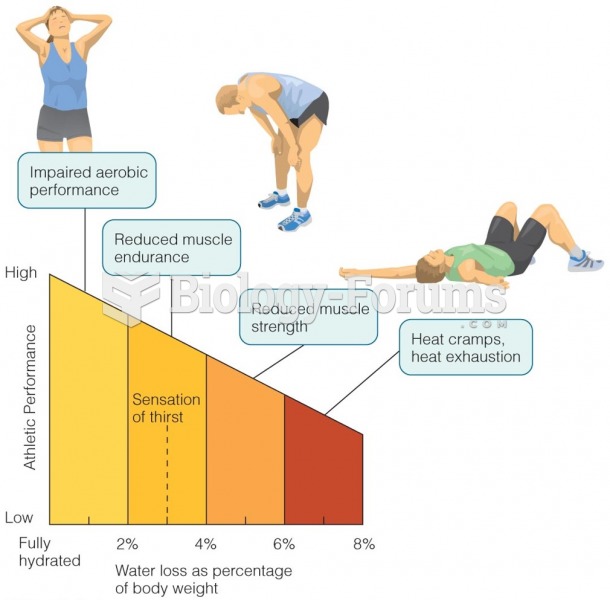|
|
|
The Centers for Disease Control and Prevention (CDC) was originally known as the Communicable Disease Center, which was formed to fight malaria. It was originally headquartered in Atlanta, Georgia, since the Southern states faced the worst threat from malaria.
Between 1999 and 2012, American adults with high total cholesterol decreased from 18.3% to 12.9%
There are more nerve cells in one human brain than there are stars in the Milky Way.
Cancer has been around as long as humankind, but only in the second half of the twentieth century did the number of cancer cases explode.
In women, pharmacodynamic differences include increased sensitivity to (and increased effectiveness of) beta-blockers, opioids, selective serotonin reuptake inhibitors, and typical antipsychotics.







